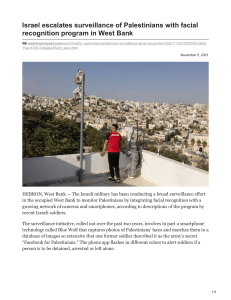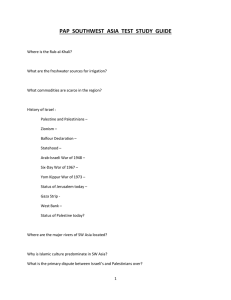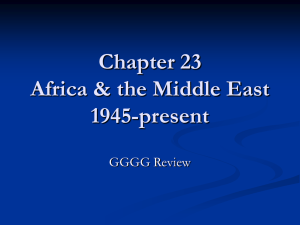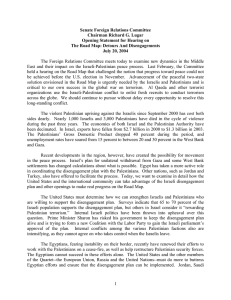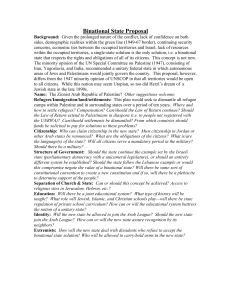The Palestinian Israeli Conflict Pursuing Peace and Justice
advertisement
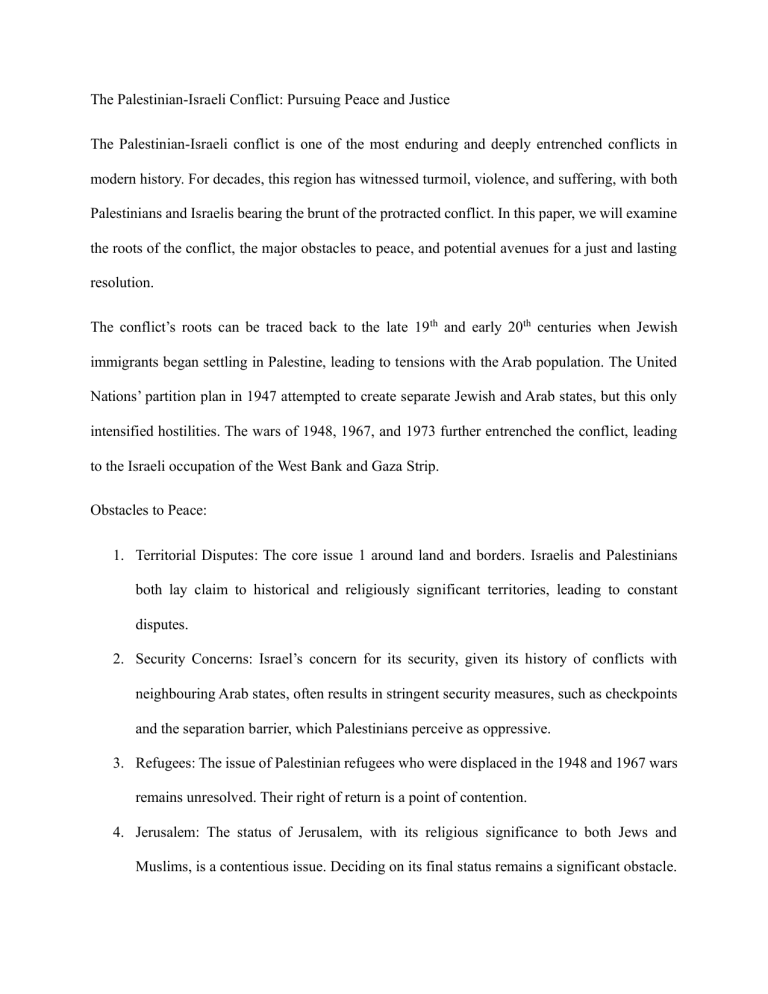
The Palestinian-Israeli Conflict: Pursuing Peace and Justice The Palestinian-Israeli conflict is one of the most enduring and deeply entrenched conflicts in modern history. For decades, this region has witnessed turmoil, violence, and suffering, with both Palestinians and Israelis bearing the brunt of the protracted conflict. In this paper, we will examine the roots of the conflict, the major obstacles to peace, and potential avenues for a just and lasting resolution. The conflict’s roots can be traced back to the late 19th and early 20th centuries when Jewish immigrants began settling in Palestine, leading to tensions with the Arab population. The United Nations’ partition plan in 1947 attempted to create separate Jewish and Arab states, but this only intensified hostilities. The wars of 1948, 1967, and 1973 further entrenched the conflict, leading to the Israeli occupation of the West Bank and Gaza Strip. Obstacles to Peace: 1. Territorial Disputes: The core issue 1 around land and borders. Israelis and Palestinians both lay claim to historical and religiously significant territories, leading to constant disputes. 2. Security Concerns: Israel’s concern for its security, given its history of conflicts with neighbouring Arab states, often results in stringent security measures, such as checkpoints and the separation barrier, which Palestinians perceive as oppressive. 3. Refugees: The issue of Palestinian refugees who were displaced in the 1948 and 1967 wars remains unresolved. Their right of return is a point of contention. 4. Jerusalem: The status of Jerusalem, with its religious significance to both Jews and Muslims, is a contentious issue. Deciding on its final status remains a significant obstacle. 5. Mutual Recognition: Mutual recognition and trust between the two parties are crucial for any peace process to succeed, but these have been elusive. Avenues for Peace: 1. Two-State Solution: The international consensus largely supports a two-state solution where both Israel and Palestine can exist side by side, each with secure and recognized borders. 2. Diplomacy and Negotiations: Diplomatic negotiations, with support from the international community, are necessary for bridging differences and reaching a settlement. 3. Humanitarian Aid and Development: Fostering economic development and improving living conditions for Palestinians can contribute to a more stable environment. 4. Grassroots Initiatives: People-to-people programs and dialogues can help build trust and understanding between Israelis and Palestinians. 5. International Involvement: Continued involvement of the international community, including the United Nations, in mediating and facilitating peace talks is essential. The Palestinian-Israeli conflict is a multifaceted issue that demands a comprehensive, balanced, and just resolution. The suffering and loss of life on both sides are unacceptable, and it is in the best interests of everyone involved, as well as the global community, to work towards a peaceful and equitable solution. This can only be achieved through sustained diplomatic efforts, empathy, and compromise, with the ultimate goal of creating a future where both Israelis and Palestinians can live in peace and security.
